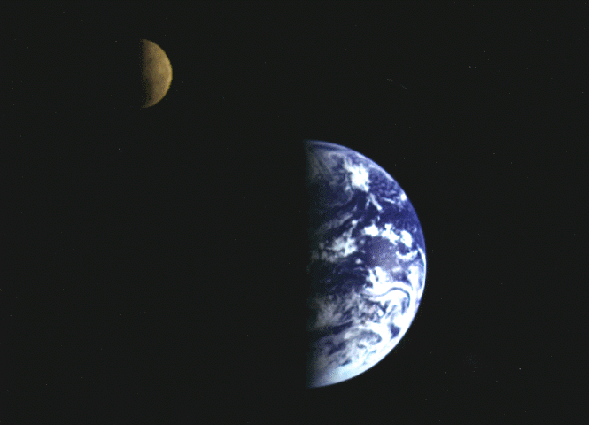Difference between revisions of "March 22, 2004"
| Line 14: | Line 14: | ||
<table width="100%" border="0" cellpadding="8"> | <table width="100%" border="0" cellpadding="8"> | ||
<tr> | <tr> | ||
| − | <td><div align="center" span class="main_sm">Image Credit: [http://www2.jpl.nasa.gov/galileo/earthmo2.html Galileo Mission]</div></td> | + | <td><div align="center" span class="main_sm"><p>Image Credit: [http://www2.jpl.nasa.gov/galileo/earthmo2.html Galileo Mission]</div></td> |
</tr> | </tr> | ||
</table> | </table> | ||
Revision as of 21:12, 17 January 2015
Double Planet
Image Credit: Galileo Mission |
|
Double Planet The origin of the Moon was long a mystery. Most scientists now accept the giant impact ["LPOD-2004-03-12.htm" model] but one of the earlier ideas was that the Earth and Moon formed at the same time from the same region of the solar nebula. However, this sister planet or double planet theory could not explain why, if the two worlds formed of the same material, the Earth has a massive iron core and a density of 5.5 g/cc while the Moon has only a small amount of iron and a resulting density of only 3.3 g/cc. The double planet theory is dead, but the Earth-Moon system does look like a double planet because the Moon is relatively large compared to the Earth: their diameters are 3,476 km and 12,756 km. And like a contrasting double star pair, the colors of our two worlds are strikingly different - we must be one of the most wonderful sights in the solar system! Technical Details: Related Links: Tomorrow's LPOD: Magnificent Moon! |
|
Author & Editor: Technical Consultant: A service of: |
COMMENTS?
Register, and click on the Discussion tab at the top of the page.




